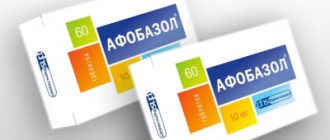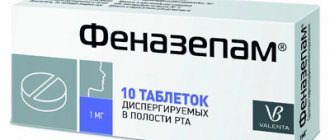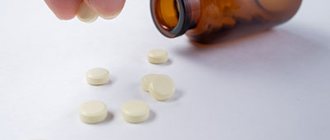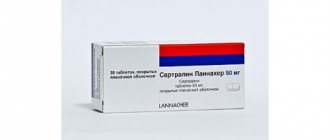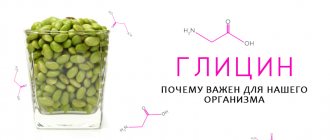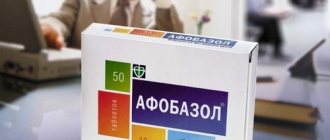Side effects of Buspirone
From the nervous system and sensory organs:
dizziness (12%), drowsiness (10%), headache (6%), nervousness (5%), fatigue (4%), sleep disturbance (3%), decreased ability to concentrate (2%); extrapyramidal disorders (very rare); ≤2% - blurred vision, confusion or depression, weakness, numbness; ≤1% - neurological symptoms (muscle weakness, tingling, pain or weakness in the arms or legs, uncontrolled movements of the torso).
From the cardiovascular system and blood (hematopoiesis, hemostasis):
≤1% - tachycardia/palpitations.
From the gastrointestinal tract:
nausea (8%), dry mouth (3%), diarrhea (2%); ≤1% - vomiting, constipation; decreased appetite.
Other:
≤1% - myalgia, spasms, muscle cramps or stiffness, rash, sweating.
Material and methods
The purpose of the study was implemented within the framework of an observational (statistical) program conducted in the department of treatment of borderline states and psychotherapy of the St. Petersburg Research Psychoneurological Institute named after. V.M. Bekhterev. The study was open-label.
The study included 36 outpatients who sought help in the specified department.
Inclusion criteria
patients had a verified diagnosis of panic disorder (F 41.0) in accordance with ICD-10, age from 18 to 65 years, signed informed consent, the possibility of treatment on an outpatient basis.
Exclusion criteria
were acute and chronic somatic diseases in the stage of decompensation, pregnancy and lactation; metabolic disorders or cancer, epilepsy, organic diseases of the central nervous system, drug and alcohol addiction, psychotic conditions and severe personality disorders.
The patients included in the study constituted a nosologically and syndromatically homogeneous group. According to ICD-10 criteria, a diagnosis of panic disorder was made on admission to all 30 patients.
The period of active therapy was 6 weeks. For patients who were taking other psychotropic drugs at the start of the study, an additional one-week wash-out period was prescribed.
All patients of the 1st (main) group (30 people) were prescribed combination therapy: spitomin (buspirone) as a monopharmacotherapy at a dose of 30 mg/day (10 mg 3 times a day) for 6 weeks, as well as a course of individual short-term directive cognitive behavioral psychotherapy - 12-15 sessions, with a frequency of 2-3 sessions per week.
The method of psychotherapy used is based on the idea that patients with panic disorder have a specific cognitive style:
they are unable to realistically perceive their sensations and interpret them catastrophically, tend to consider any inexplicable symptom or sensation as a sign of the onset of a life-threatening condition, while they have irrational beliefs that their vital systems - cardiovascular, respiratory, central nervous - will collapse. In connection with this, cognitive restructuring was chosen as the main technique, and interventions were carried out to correct misconceptions and interpretations of bodily sensations. Due to the fact that dyspnea often occurs against the background of stress, which is assessed as threatening health and provokes or intensifies fear caused by external alarming stimuli, the patients were given training in breathing control followed by cognitive reattribution of the meaning of symptoms. Exercises were performed to attract/distract attention.
A number of scales were also used to assess anxiety and panic symptoms: the Hamilton Anxiety Scale (HAM-A); Clinical Global Impression (CGI); Montgomery-Asberg (MADRS), which allows you to assess the presence of concomitant depressive symptoms, the Spielberger-Hanin anxiety scale, which makes it possible to assess the level of situational and personal anxiety. The patients' condition was assessed at the beginning and end of treatment: before the prescription of spitomin (buspirone), and then on the 7th, 14th, 28th and 42nd days of therapy. The clinical and psychological method was represented by participant observation, which was constant during the treatment of patients throughout the observational program.
During the study, patients in the main group were compared with a group of patients with panic disorder who underwent outpatient treatment only using individual cognitive-behavioral psychotherapy - group 2 (30 people). The selection of subjects in both groups was carried out using the continuous sampling method. The majority of those examined from both groups sought help after visiting somatic specialists, assessing their condition as a manifestation of a cardiac, endocrinological or neurological disease, considering the alarming symptoms secondary, associated with concerns about their health and the lack of adequate care and an accurate diagnosis.
Groups 1 and 2 were homogeneous in all indicators, which made it possible to exclude the negative influence of heterogeneity factors on the reliability of the results obtained. Thus, in the 1st group there were 14 (46.7%) men and 16 (53.3%) women, in the 2nd group there were 12 (40%) men and 18 (60%) women. There were no significant differences in this parameter between the study groups. The study included patients from 18 to 58 years old. The average age in group 1 was 34.8±1.4 years, in group 2 - 35.9±1.5 years (Table 1). There were no significant differences in the average age of patients; The most common diagnosis of panic disorder was observed between the ages of 30 and 39 years.
Table 1. Distribution of patients by age
Characteristics of the social status of patients are presented in Table. 2.
Table 2. Characteristics of the social status of patients
From the table 2 also shows that in terms of social indicators, the selected groups of patients with panic disorder did not differ significantly from each other: Pearson’s χ2 test for the distribution of patients by gender was 2 ( p
<0.157), by age - 20 (
p
<0.22), by education - 6 (
p
<0.199), by marital status - 3 (
p
<0.223), by social status - 12 (
p
<0.213).
For mathematical and statistical processing, a research protocol was drawn up, which included passport, social, anamnestic, clinical and experimental psychological indicators. Further analysis of the data included in it was carried out using the statistical software package Statistica 6, SPSS for Windows - version 12.
Precautions for the substance Buspirone
Use with caution simultaneously with neuroleptics, antidepressants, cardiac glycosides, antihypertensive and antidiabetic drugs, and oral contraceptives. For renal and liver failure of mild to moderate severity, liver cirrhosis, it is prescribed in smaller doses and under the strict supervision of a physician. During the treatment period, alcohol consumption should be avoided. At the beginning of treatment, use with caution while working for drivers of vehicles and people whose profession is associated with increased concentration of attention.
Introduction
Currently, panic disorder is a widespread, chronic disease that manifests itself at a young, socially active age. Its prevalence, according to epidemiological studies [1], is 3-6% in the general population. The relevance of this problem is also determined by the fact that people diagnosed with panic disorder often do not come to the attention of psychiatrists at all and prefer to be treated by doctors of other specialties. In these cases, less than 50% of patients receive treatment, while less than 30% receive adequate therapy, which contributes to the transition of panic disorder into a chronic form.
Currently, more and more researchers [2–5] are inclined to use combination therapy using pharmacotherapy and psychotherapy for the treatment of panic disorder. Psychopharmacotherapy provides relief of attacks and an increase in the interictal period, and cognitive-behavioral psychotherapy leads to a change in patients’ assessment of their condition, helping them master effective methods of overcoming anxiety and its vegetosomatic manifestations and promoting successful social adaptation and improvement of interpersonal functioning [6].
Considering the need to provide psychotherapeutic assistance to an increasing number of patients with panic disorder in modern socio-economic conditions without increasing material costs while maintaining the effectiveness of therapeutic interventions, the need for the use of short-term methods of psychotherapy becomes obvious [7].
The main drugs for the treatment of panic disorder have traditionally been benzodiazepine anxiolytics and antidepressants of the selective serotonin reuptake inhibitor (SSRI) group and clomipramine. Having good anti-panic activity and effectively reducing anxiety levels, they have a number of disadvantages that limit the possibilities of their use. The main disadvantage of antidepressants is their delayed action, which contributes to the consolidation of anticipatory anxiety, a negative effect on sexual function and body weight, and benzodiazepines can also cause addiction to them and the development of dependence. Under these conditions, the appearance in the doctor’s arsenal of the non-benzodiazepine anxiolytic buspirone (spitomin), new to domestic specialists, opens up additional opportunities for the treatment of panic disorder.
Spitomin (buspirone) is an anxiolytic (anti-anxiety) non-benzodiazepine drug that also has an antidepressant effect. This drug came into practice in the 80s of the last century, and to date a sufficient evidence base has been accumulated for its effectiveness in both paroxysmal panic and generalized anxiety [8-10]. The advantages of its use are the speed of onset of effect, the absence of dependence and addiction, the possibility of combined use with other psychotropic drugs, the absence of negative effects on sexual functioning and body weight [11]. The mechanism of action of buspirone is associated with its effect on the serotonergic and dopaminergic systems. Buspirone does not have a negative effect on psychomotor functions, drug dependence or withdrawal symptoms.
Indications for the use of buspirone are generalized anxiety disorder, panic disorder, autonomic dysfunction syndrome, alcohol withdrawal syndrome, auxiliary therapy of depressive disorders.
The purpose of this study is to study the effectiveness of spitomin (buspirone) in the complex treatment of panic disorder.
Overdose
Symptoms: nausea, vomiting, dizziness, drowsiness, increased fatigue, miosis, gastrointestinal disorders, loss of consciousness. severe complications were not noted even when taking a daily dose of up to 2400 mg.
Treatment: gastric lavage, monitoring of respiration, pulse, blood pressure. Symptomatic therapy. There is no specific antidote. Buspirone is not eliminated by hemodialysis. Based on experience with the drug, high-dose overdose (single dose 375 mg orally) does not necessarily cause severe symptoms.
Note!
Description of the drug Spitomin table. 5mg No. 60 on this page is a simplified author’s version of the apteka911 website, created on the basis of the instructions for use.
Before purchasing or using the drug, you should consult your doctor and read the manufacturer's original instructions (attached to each package of the drug). Information about the drug is provided for informational purposes only and should not be used as a guide to self-medication. Only a doctor can decide to prescribe the drug, as well as determine the dose and methods of its use.


